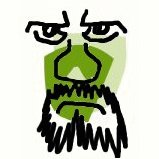Nicolas de Staël: A Journey in Paint

Aside from an indulgence in art, part of the human condition that distinguishes us from other animals is our acknowledgement of anniversaries. Something about the anniversary of a death resonates with us far longer than that of a birth, as it has the power to invoke sorrow and loss all over again, or often for the first time. Fifty years ago today the painter Nicolas de Staël locked his studio, climbed onto the terrace of the roof, and threw himself to his death.
Usually before you know how an artist died or sometimes even that an artist is dead, you get to like their works. Then you seek out the artist, and you find out they've been diving in Antibes without any water. Nicolas de Staël has been a painter whose paintings I have loved for over twenty years.
A Representational Journey
Nicolas de Staël's artistic journey was a lyrical one on the edge of abstraction from greys to colors to greys. A hellish journey that accelerated in output, he was possibly born before his time, or at least before a time that would not have told him his paintings were non-representational when they were clearly representational.A Change of Direction
A chaser of elusive skies he painted them until they were no more. A painter of absences, or more correctly of presences no longer present, he painted gesturally with seeming clarity. Hard irregular lozenge strokes of color built up his compositions, and he possibly peaked when he painted soccer players of France. I hope he believes he peaked because then he returned to more obvious representational works of landscapes. Possibly he just exhausted his search in one direction. In his next direction he continued to paint tenderly, but managed to render the calm between places on the edge of drastic change. Whatever happened to cause him to change, he apparently was desperately searching, and increasingly so at the end.According to the catalogue raisonné that his widow produced, de Staël painted 1,100 paintings before he ended his life. The Guardian gives us the remarkable story in figures:
355 paintings were produced in the eighteen years between 1933, and 1951. After that the annual rate increased rapidly, peaking with 277 canvases in 1954, until his ten final weeks when he painted 91 canvases before the dive.
It's hard not to think that he was heading somewhere, even if head first.
Any friend of Georges Braque is a friend of mind. Nicolas de Staël, I salute you.










0 Comments:
Post a Comment
<< Home